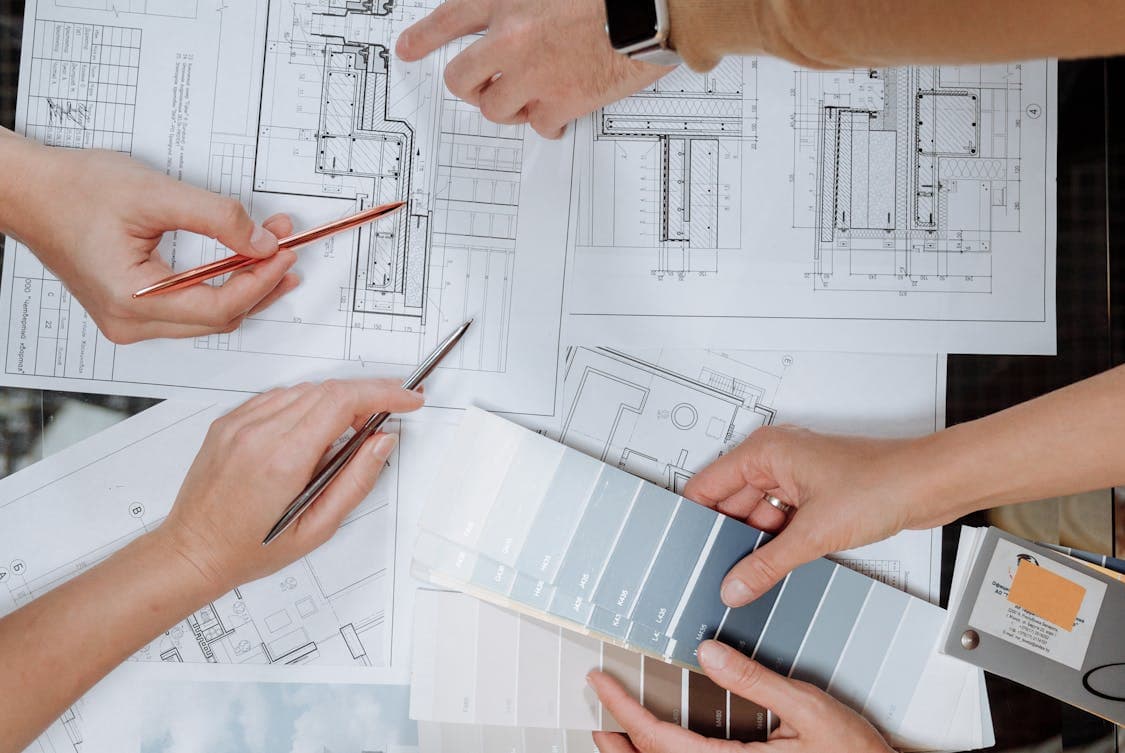Building a house is no small feat. It requires careful thought, meticulous planning, and a clear strategy to ensure that everything runs smoothly from conception to completion.
Here’s a look at five practical steps to create a solid house building plan, ensuring your dream home becomes a reality.
1. Define Your Needs and Goals
Before you get lost in the sea of blueprints and materials, take a moment to articulate your needs and goals. What do you envision? Is it a cozy cottage, a spacious family home, or a modern marvel? Jot down your ideas. This list will serve as your guiding star.
Next, think about the number of rooms you need. How many bedrooms? Will you require a home office or a guest room? Understanding your requirements will shape the entire project, so give this step the attention it deserves.
Setting a budget is also a key component of this phase. Determine how much you’re willing to spend and identify potential financing options. This not only helps prevent financial strain but also narrows down your choices in materials and design.
Lastly, consider your timeline. Do you have a deadline, such as a specific date to move in? Knowing this will help in scheduling and managing contractors effectively as the project progresses.
2. Research Local Regulations
Diving into local building codes and regulations can feel like sifting through a maze. Yet, this step is essential for avoiding costly setbacks. Start by contacting your local building department to understand zoning laws, setback requirements, and other regulations that may affect your project.
You’ll also want to familiarize yourself with necessary permits. Some areas require specific approvals before you can break ground. Missing these requirements can lead to delays or fines, so keep this in mind as you make your plans.
Consider the environmental impact of your build as well. Some regions have restrictions or guidelines around preserving natural habitats. Finding these details early can save you a headache down the line.
Lastly, pay attention to neighborhood considerations. Some communities have architectural guidelines that dictate how homes should look. Understanding these can help ensure that your home fits seamlessly into the community.
3. Envision the Design

This is where the fun begins. With your needs and local regulations in mind, start sketching out your vision. Consider hiring an architect or designer who can bring your ideas to life while ensuring they adhere to codes.
Create a mood board to visualize colors, textures, and materials. Mixing and matching can spark new ideas. Don’t shy away from inspiration; browse magazines, websites, or visit model homes to see what resonates.
Focus on functionality, too. A beautiful design won’t mean much if it doesn’t serve your lifestyle. Think about flow and accessibility. Open floor plans can create spaciousness, while dedicated rooms allow for privacy and focus.
Designs that adapt to future needs are always smarter investments, notes Aveling Homes, as they reduce the need for major renovations later. If you plan to expand your family or work from home, consider how the design can accommodate those changes.
4. Select Quality Materials and Contractors
With a solid design in hand, it’s time to choose the right materials. Quality matters, so don’t skimp here. Research different types of materials, from roofing to flooring, and consider their durability, maintenance, and aesthetics.
Get multiple quotes from contractors. This is the point where you can compare prices, expertise, and timelines. Look for reviews and previous work examples to ensure they align with your vision.
Don’t forget about warranties and guarantees. A reputable contractor should stand behind their work, offering peace of mind for any future issues. It’s always wise to ask about these aspects upfront.
Finally, establish clear communication with your chosen contractor. Regular check-ins can help you stay aligned, making adjustments as necessary. Setting the tone for a collaborative relationship can lead to a smoother building process.
5. Create a Timeline and Budget
As construction approaches, it’s time to draft a detailed timeline and budget. Break the project into stages, estimating how long each phase will take. This will help in setting milestones and managing expectations.
Your budget should be equally detailed. Include costs for materials, labor, permits, and unexpected expenses. It’s wise to set aside a contingency fund, typically around 10-20% of the total budget, to account for surprises.
Tracking expenses throughout the project is crucial. Regularly review your budget to ensure you’re on track. If costs start to balloon, revisit your plans and make adjustments as necessary.
Lastly, keep an eye on the timeline too. Delays can happen, but proactively managing the schedule can help mitigate problems. Communicate openly with your contractor to address any issues that may arise, ensuring the project stays on course.
By following these practical steps, you can create a strong house building plan that serves as a solid foundation for your dream home. From defining your needs to selecting the right materials and ensuring everything aligns with your vision, each step plays a vital role in realizing your dream. Happy building!

